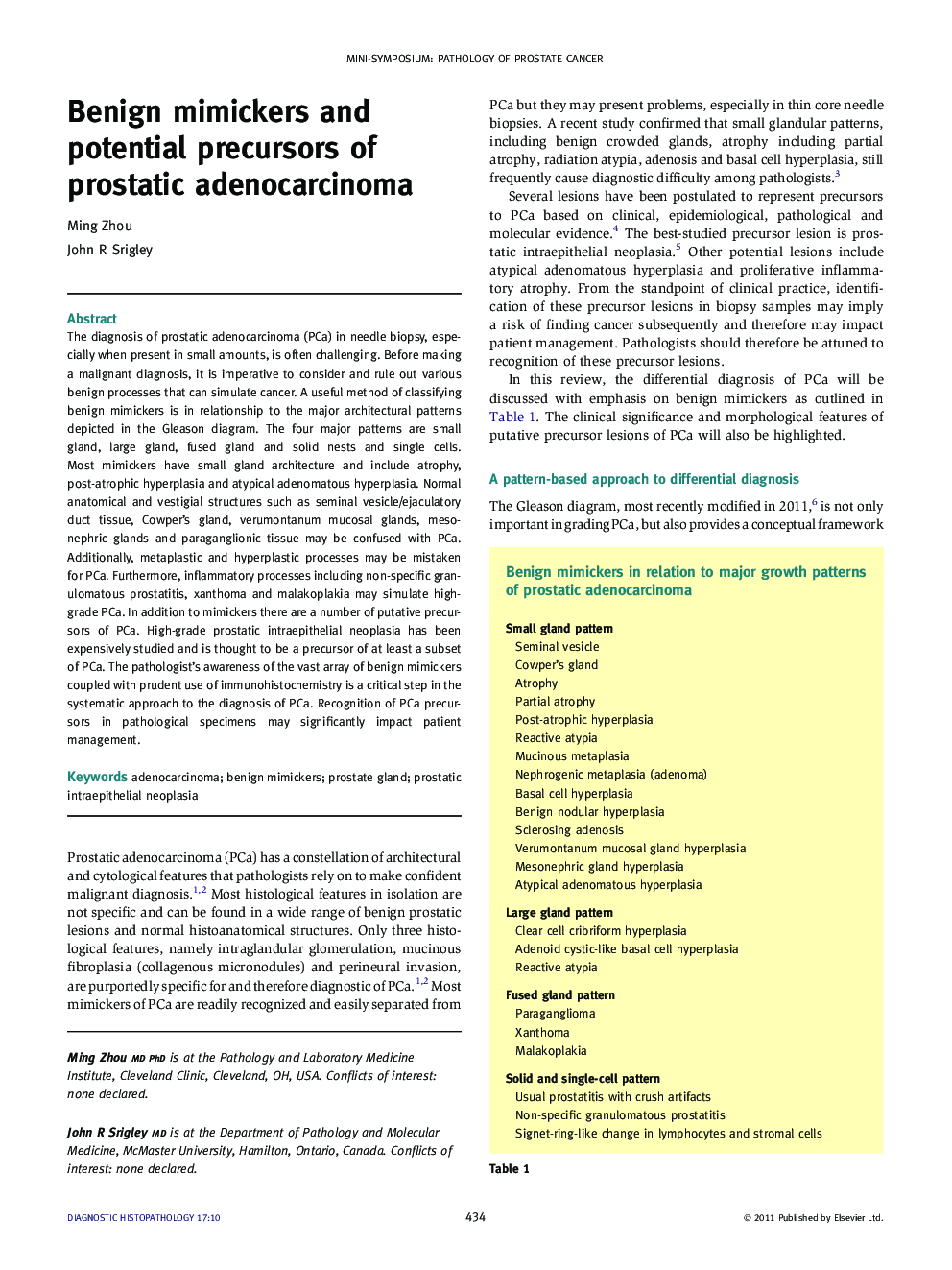| Article ID | Journal | Published Year | Pages | File Type |
|---|---|---|---|---|
| 4131410 | Diagnostic Histopathology | 2011 | 13 Pages |
The diagnosis of prostatic adenocarcinoma (PCa) in needle biopsy, especially when present in small amounts, is often challenging. Before making a malignant diagnosis, it is imperative to consider and rule out various benign processes that can simulate cancer. A useful method of classifying benign mimickers is in relationship to the major architectural patterns depicted in the Gleason diagram. The four major patterns are small gland, large gland, fused gland and solid nests and single cells. Most mimickers have small gland architecture and include atrophy, post-atrophic hyperplasia and atypical adenomatous hyperplasia. Normal anatomical and vestigial structures such as seminal vesicle/ejaculatory duct tissue, Cowper’s gland, verumontanum mucosal glands, mesonephric glands and paraganglionic tissue may be confused with PCa. Additionally, metaplastic and hyperplastic processes may be mistaken for PCa. Furthermore, inflammatory processes including non-specific granulomatous prostatitis, xanthoma and malakoplakia may simulate high-grade PCa. In addition to mimickers there are a number of putative precursors of PCa. High-grade prostatic intraepithelial neoplasia has been expensively studied and is thought to be a precursor of at least a subset of PCa. The pathologist’s awareness of the vast array of benign mimickers coupled with prudent use of immunohistochemistry is a critical step in the systematic approach to the diagnosis of PCa. Recognition of PCa precursors in pathological specimens may significantly impact patient management.
